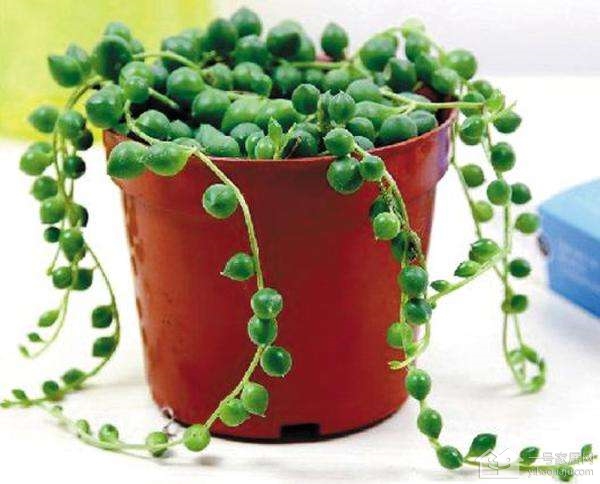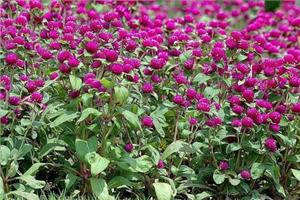Matters needing attention in how to cultivate Pearl Cymbidium
Pearl hanging orchid by a string of bulging, full green oval leaves, also known as jadeite beads, lover's tears, Buddha beads hanging orchid, emerald beads, green bell, green bell. The florescence is usually from December of that year to January of the following year.

Pearl orchid prefers loose and fertile soil rich in organic matter. It grows best in the environment of warmth, high humidity and strong scattered light. High temperature and high humidity should be avoided in summer, otherwise it is easy to rot stems and die. Potted flowers can be cultivated in the shade of rain protection. After autumn, the plants will resume growth, increase light and topdressing liquid fertilizer.
Pearl hanging orchid is a general variety of flowers, so its price is not expensive. Generally speaking, the price of pearl orchids with flowerpots is only less than 20 yuan, while the price of pearl orchids alone is less than 10 yuan, which is a very low price of flowers.
Pearl hanging orchid, also known as lover's tears, emerald beads. Its plants are small and exquisite, and the full green leaves are swaying like wind chimes. Green and like hanging green Buddha beads, always give people a sense of serenity and elegance. Its flower language is simple and elegant, innocent and quiet.
The culture method of pearl orchid: soil
Pearl orchid likes fertile soil, and it grows well in warm and humid environment. When preparing to cultivate pearl orchids, we can use fully rotten cow dung and coconut bran as culture soil and mix them well according to the proportion of 4:6. In autumn, the pearl orchid needs to be replenished with liquid fertilizer.
The culture method of pearl orchid: cuttings
Pearl orchids are generally cultivated in the way of cymbidium. Pay attention to the healthy and sturdy ones when pruning, and cut next to the protuberance of the branch. Just bury the cut part directly in the soil. Then pour the right amount of water into the soil so that the soil can stick to the reduced pearl orchid. It doesn't need to be watered for the next month. Generally speaking, if the temperature is controlled at 15 ℃, pearl orchids can sprout in two to three weeks.
Matters needing attention in the culture of pearl orchid
In order to raise a good-looking pearl orchid, you need to pay attention to the following four points:
1. Because the pearl orchid has a lot of meat and rich juice, it is more hardy. Therefore, in the process of cultivation, we should water less. In the hot and dry season, you can often spray water on the leaves and branches of the plant, so as to maintain the green degree of the whole plant. As the pearl orchid likes the semi-overcast environment, we should create a good growth environment for it.
2. Because the root system of the pearl orchid is relatively shallow, it should be planted in a shallow basin. In order to increase the permeability and filtration of the basin, a piece of coarse pottery can be placed on the bottom of the basin and covered with a layer of coarse sand or fine cinder. In the pearl orchid culture soil can also add some rotten leaves and sand to improve air permeability.
3. Pearl orchid is cold-resistant and likes humid and warm climate, so the temperature can be controlled between 20 ℃-28 ℃ to avoid too high or too low temperature. Especially when the temperature is more than 30 ℃, the pearl orchid is no longer growing, and the times of watering and fertilization should be reduced at this time to avoid rotting roots.
4. in the spring and autumn when the pearl orchid grows vigorously, we should pay attention to applying thin fertilizer many times, and often spray nitrogen fertilizer and potassium dihydrogen phosphate with a concentration of 1-3 ‰ on the leaf surface of the pearl orchid, so as to make the pearl body fuller and more ornamental.
If you want to know more related information, you can continue to follow the No. 1 home network.
Related
- Wuhan Hospital Iron Tree Blooming Result Was Instantly Frightened by the Gardener Master
- Which variety of camellia is the most fragrant and best? Which one do you like best?
- What is the small blue coat, the breeding methods and matters needing attention of the succulent plant
- Dormancy time and maintenance management of succulent plants during dormancy
- Minas succulent how to raise, Minas succulent plant pictures
- What are the varieties of winter succulent plants
- How to raise succulent plants in twelve rolls? let's take a look at some experience of breeding twelve rolls.
- Attention should be paid to water control for succulent plants during dormant period (winter and summer)
- Watering experience of twelve rolls of succulent plants
- Techniques for fertilizing succulent plants. An article will let you know how to fertilize succulent plants.



